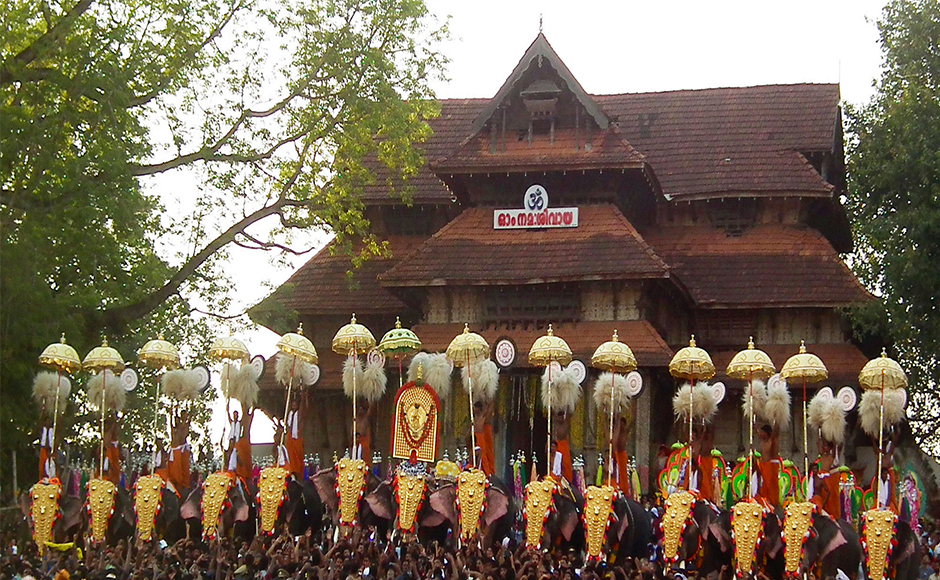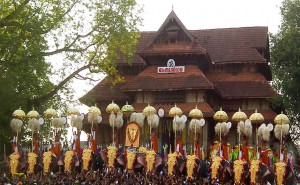
1798 temple in Kerala gets UNESCO Asia-Pacific award for conservation

Kerala’s rich cultural heritage, has brought international fame by winning the UNESCO’s 2015 Asia-Pacific award for conservation efforts for their famous Vadakkunathan temple in Thrissur in South India, which is more than 1200 years old, which still retains its original form.
Millions of devotees and tourists gather every year to witness the world famous “Thrissur Pooram” at the temple premises, where ceremoniously decorated elephants are paraded amidst much fanfare.
In this temple where Lord Shiva is worshipped, where the authorities have preserved the idols and wood work from ancient times.
Natural lime with herbs and jiggery with Ayurvedic oils have been used to preserve this cultural heritage, as no cement was used on the entrances called Gopurams.
Thrissur Pooram was the idea of Raja Rama Varma also known as Sakthan Thampuran, the Maharaja of Cochin (1790-1805).
So in 1798, he unified the 10 temples situated around Vadakkunnathan Temple and organised the celebration of Thrissur Pooram as a mass festival. He invited temples with their deities to City of Thrissur to pay obeisance to Lord Vadakkunnathan, the presiding deity of the Vadkkunnathan Temple. Sakthan Tampuran ordained these temples into two groups, namely “Paramekkavu side” and “Thiruvambady side”. The Paramekkavu side consists of besides “Paramekkavu Bagavathy”, 1) Pookattikkara-Karamukku Baghavathy, 2) Choorakattukara Baghavathy, 3)Chempukkavu Baghavathy, 4) Panemukkumpilly Sastha.
Besides Thiruvambady Baghavathy, the Thiruvambady side is having 1) Ayyanthole Baghavathy 2) Nethilakkavu Baghavathy 3) Laloor bagavathy 4) Kanimangalam Sastha. The Pooram was to be centered around the Vadakkunnathan Temple, with all these temples sending their Poorams (the whole procession), to pay obeisance to the Shiva, the presiding deity.
